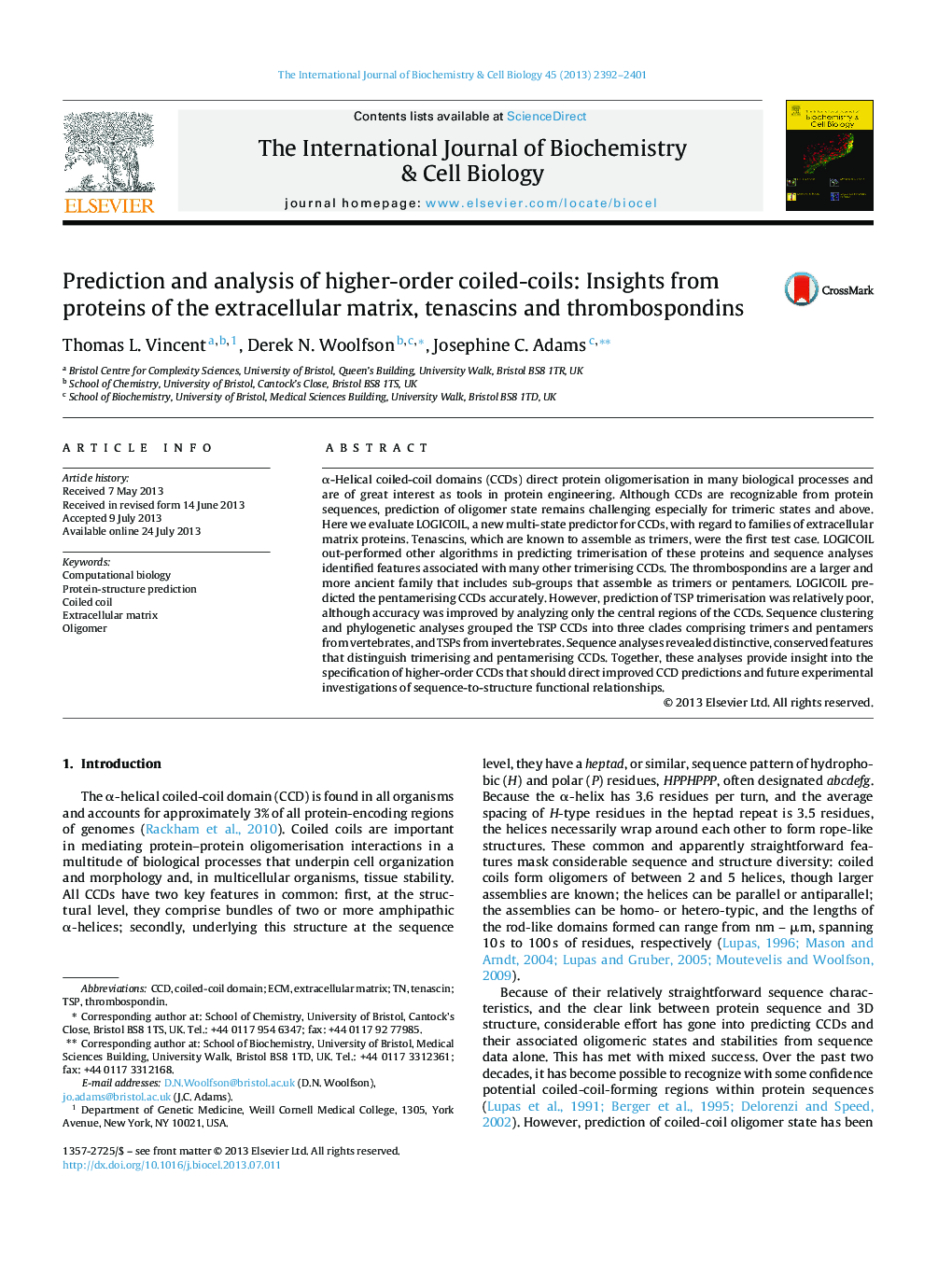| Article ID | Journal | Published Year | Pages | File Type |
|---|---|---|---|---|
| 8323831 | The International Journal of Biochemistry & Cell Biology | 2013 | 10 Pages |
Abstract
α-Helical coiled-coil domains (CCDs) direct protein oligomerisation in many biological processes and are of great interest as tools in protein engineering. Although CCDs are recognizable from protein sequences, prediction of oligomer state remains challenging especially for trimeric states and above. Here we evaluate LOGICOIL, a new multi-state predictor for CCDs, with regard to families of extracellular matrix proteins. Tenascins, which are known to assemble as trimers, were the first test case. LOGICOIL out-performed other algorithms in predicting trimerisation of these proteins and sequence analyses identified features associated with many other trimerising CCDs. The thrombospondins are a larger and more ancient family that includes sub-groups that assemble as trimers or pentamers. LOGICOIL predicted the pentamerising CCDs accurately. However, prediction of TSP trimerisation was relatively poor, although accuracy was improved by analyzing only the central regions of the CCDs. Sequence clustering and phylogenetic analyses grouped the TSP CCDs into three clades comprising trimers and pentamers from vertebrates, and TSPs from invertebrates. Sequence analyses revealed distinctive, conserved features that distinguish trimerising and pentamerising CCDs. Together, these analyses provide insight into the specification of higher-order CCDs that should direct improved CCD predictions and future experimental investigations of sequence-to-structure functional relationships.
Keywords
Related Topics
Life Sciences
Biochemistry, Genetics and Molecular Biology
Biochemistry
Authors
Thomas L. Vincent, Derek N. Woolfson, Josephine C. Adams,
